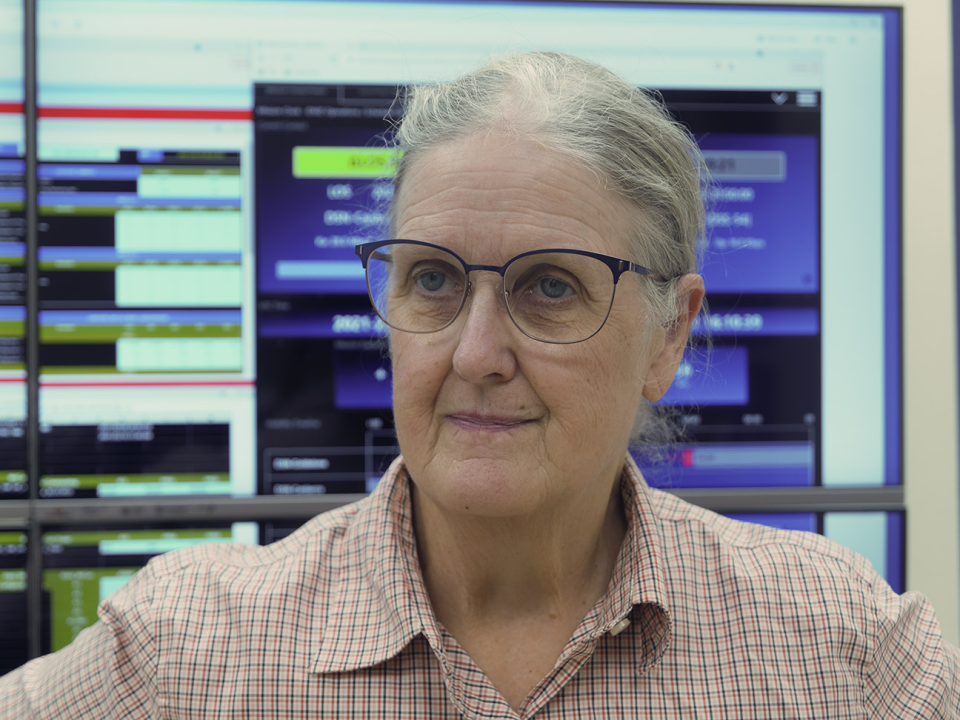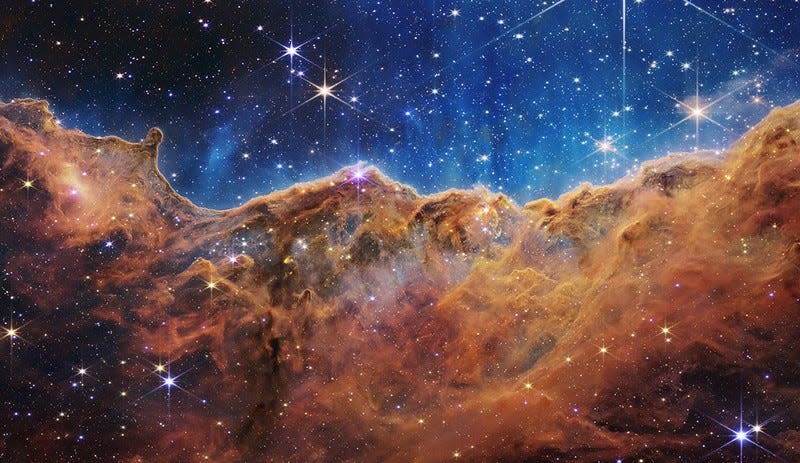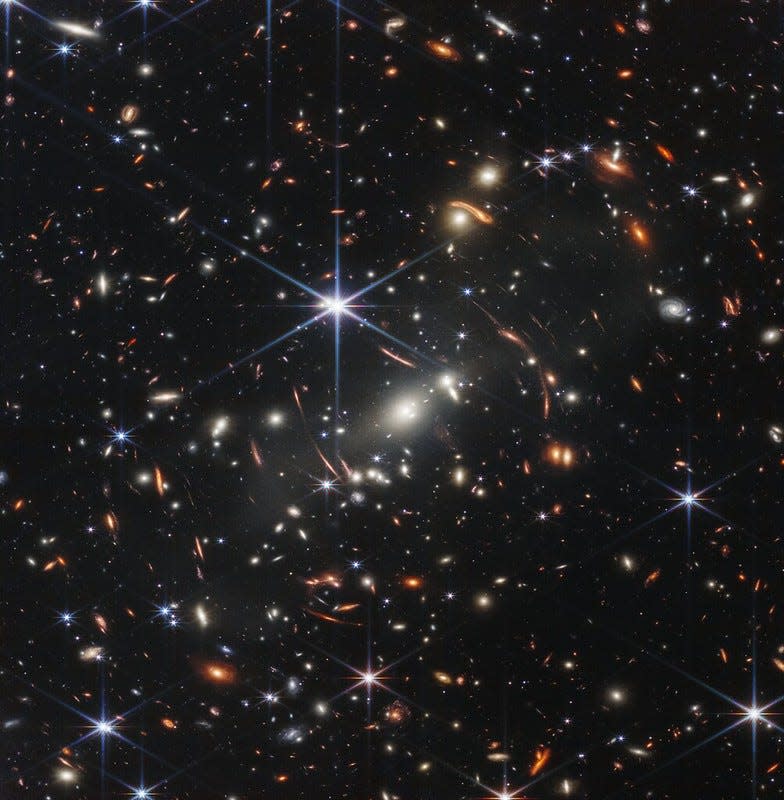Webb telescope's new images of Jupiter: How an Arizona scientist helped make them possible
As the principal investigator for the Near-Infrared Camera (NIRCam), the primary imager on the James Webb Space Telescope, Marcia Rieke knew what the camera she developed was capable of.
But it wasn’t until the first jaw-dropping images were beamed back to Earth in mid-July that Rieke, an astrophysicist and professor at the University of Arizona, realized the full extent of her work.
And that was just the beginning. More images will follow, including the stunning representations of Jupiter released on Aug. 20.
“Everyone was astounded at how beautiful and detailed the pictures were,” Rieke said of the photos released in July. “I was above cloud nine because these were such stunning pictures.

"And on the one hand we calculated what the image parameters would be, or the quality of the images, but until you actually see a real image taken through the telescope, not just of a single star, but of an interesting place, you just don't realize how wonderful this telescope actually is.”
More: An Apache pro skater and Tony Hawk's foundation are bringing a skate park to Arizona
Webb telescope's latest images: Jupiter
On Aug. 20, NASA released new images of Jupiter captured by the James Webb Space Telescope.
The images are from the telescope's NIRCam, which has three specialized infrared filters that reveal details of the planet.

The images, created from a composite of several images, show Jupiter's famous "Great Red Spot," a storm so big that it could swallow the Earth; auroras; faint rings; and even distant galaxies in the background.
Observations of Jupiter were led by Imke de Pater, professor emerita of the University of California, Berkeley, with Thierry Fouchet, a professor at the Paris Observatory. Their work is part of an international collaboration for Webb’s Early Release Science program.
Webb photos were the result of over 20 years of work
The first photo from the Webb telescope, labeled SMACS 0723, was released by President Joe Biden on July 12. It shows a dizzying array of galaxies never before seen by humans.
“That image is just kind of scratching the surface of what Webb is going to do,” Rieke said.
Indeed, the pictures that soon followed were just as dazzling, showing in vivid detail various nebulae, galactic clusters and a black hole, all representing various stages of the universe’s history.
The release of the remarkable photos, which have astonished the scientific community and the world at large, holds special significance for Rieke. The images represent the culmination of over 20 years of work in infrared imaging.
Rieke and her team were responsible for developing and testing the NIRCam, the primary imager for the Webb telescope. The NIRCam is what makes the Webb so special, allowing scientists to see crucial wavelengths of light that can reveal even more of the universe than can be observed in visible light.
More: She's honoring her father by getting young girls outdoors, just like he did for her
How Rieke got involved with the James Webb Telescope
Rieke has had a lifelong love for science and outer space, from her early years growing up in Michigan and reading science fiction books to taking her first college classes in cosmology.
After getting her undergraduate and master's degrees in physics from the Massachusetts Institute of Technology in Boston, she established herself as a leading scholar in infrared astronomy, instrument development and public policy related to space exploration.
She developed groundbreaking research on infrared observations of the center of the Milky Way galaxy and worked on the Hubble Space Telescope, the predecessor to the James Webb Space Telescope.
Rieke came to the University of Arizona in 1976 as a postdoctoral fellow. Today she is a Regents Professor of astronomy teaching postdoctoral students at the university’s Steward Observatory in Tucson. The Regents Professor title is the university's highest recognition of academic merit.
Rieke first got involved with the Webb telescope project in 1998 when the idea was just being formulated. She was part of a committee that discussed everything the telescope would comprise.
In 2002 she and her team submitted a proposal for the NIRCam, one of four imaging devices on the telescope, to NASA. In 2007 Rieke helped lead her team in building the NIRCam, which was delivered to the Goddard Space Flight Center in Maryland in 2013.
'It was nerve-wracking for the first 20 years'
Despite having contributed to the Hubble Space Telescope, Rieke said the long and arduous work on the Webb telescope was a lot of pressure. It was, she says, literally a leap into the unknown.
“It was nerve-wracking for the first 20 years when we weren't sure that everything was going to work,” she said.
The exultation of seeing the first images have given way to even more pressure. Everyone wants to know what the images signify.
“The pressure now is to analyze them quickly and to get on with why you got involved in the first place and to actually reap the benefit of having done all this,” Rieke said.
More: The case for losing yourself in the NASA photos, the perfect antidote to doomscrolling
How far can the Webb Telescope see?
For most space objects, the term light-years is used to describe their distance from Earth. (One light-year is about 6 trillion miles.) Rieke likes to frame the concept differently: What we are seeing from the Webb telescope is equivalent to looking back in time.
“It can see objects that might have formed a hundred million years after the Big Bang,” Rieke said.
That means the Webb Telescope is offering an intimate look into the very beginnings of the universe, something not previously possible.
Rieke’s NIRCam, and the other imaging devices on the Webb telescope, work by by capturing images of infrared energy given off by objects in space. Infrared light is not visible to the human eye. Humans can only see a very small part of the electromagnetic spectrum (visible light).
More: This Tempe scientist-teacher will ride on SpaceX's first private flight
What has the James Webb telescope discovered?

One image that Rieke points out is of the Carina Nebula, one of the largest and brightest nebulae in the sky. It's over 7,600 light-years from earth. According to Rieke, the image of Carina shows intimate details of the star formation process.
Another image shows never-before-seen details of Stephan’s Quintet, a visual grouping of five galaxies over 290 million light-years away.
“If you talk to an astronomer, you will discover that each of these images has a different story to tell,” she said.
What will the Webb telescope reveal next?
While Rieke waits for the next images, expected to come in September, she is excited about what the Webb telescope may reveal in the coming years. The telescope is expected to be operational for at least 20 years.
“There's going to be so much to learn about the universe,” Rieke said.

Rieke and her team have laid out a program in which they will survey a small patch of sky, exposing the photos for several weeks at a time. Their goal is to peer back to the beginnings of the universe.
“What we want to do is indeed find these distant galaxies, the first galaxies to form after the Big Bang," Rieke said. “And to be able to prove that is the tricky part. So we're still thinking through how to use our data best to show that we have, in fact, found the very first galaxies.”
Is there life on other planets?
With so much interest and awe around the Webb telescope's images, Rieke hears the question: Will we find life on other planets? She says it's a common topic in her field but not one that can be answered just yet.
“People would very much like to be able to say that they found life somewhere else,” Rieke said. “But right now that’s very difficult.
"With Webb, probably the best we can do is we'll be able to say there's a planet orbiting some star and that planet's characteristics, including its atmosphere, match those of Earth. That's not the same thing as saying there's life there, but you should be able to find a place very much like home.
“It could happen this year, or it may take several years. People have picked out promising targets, but it takes a while to measure them and to analyze them. But I think it's within our capabilities to do it.”
Where is the Webb telescope now?
For more information on where the James Webb telescope is, events, observation schedules and facts visit https://jwst.nasa.gov.
You can connect with Arizona Republic Culture and Outdoors Reporter Shanti Lerner through email at shanti.lerner@gannett.com or you can also follow her on Twitter.
Support local journalism like this story by subscribing today.
This article originally appeared on Arizona Republic: Webb telescope camera designer: Meet astronomer Marcia Rieke

